What's New in SCUA-a: By the People, For the People
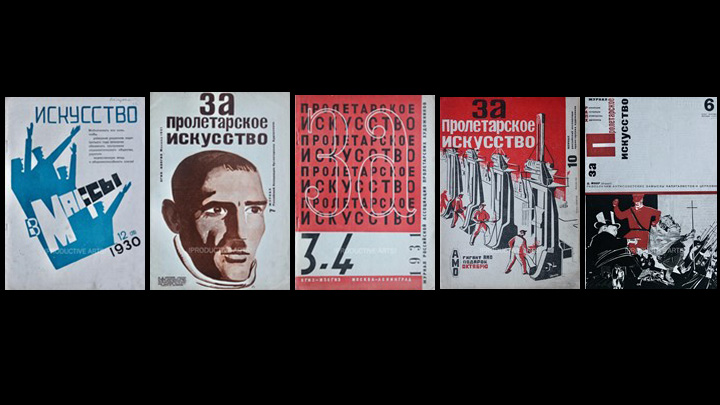
New and recently cataloged materials now available in Special Collections and University Archives. Patrons can visit SCUA (Love Library 1st floor) Monday - Thursday from 10 a.m. - 4 p.m., and are encouraged to set up an appointment for the best service.
By the People, For the People from Anna Culbertson, Director of Special Collections & University Archives
These extremely rare productions, from the early years of the USSR, support courses like HONORS 313: The Soviet Experiment and ART 345: History of Graphic Design, just to name a few!
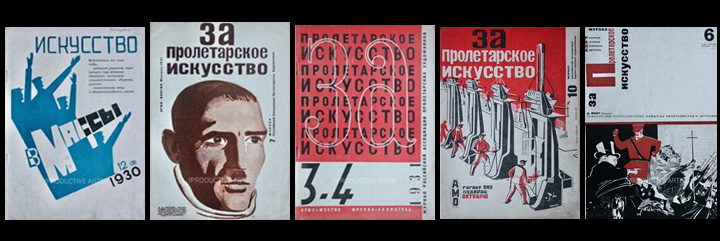
Iskusstvo v massy. (Art of the Masses), succeeded by Za proletarskoe iskusstvo (For Proletarian Art). 1929-32, 33 issues in total.
Both journals are profusely illustrated with the work of major artists and related theories. Published by the Russian Association of Proletarian Artists, Moscow. This journal run is so beautiful, Anna is openly sobbing as she writes this!
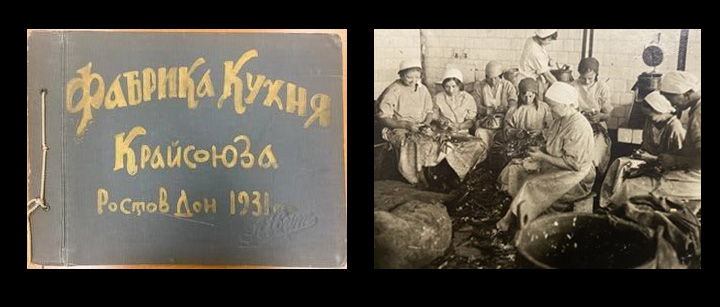
Fabrika Kukhnia Kraisoiuza, Rostov Don (Regional Union Factory Kitchen, Rostov-on-Don), 1931.
This incredible photo album documents the entire process of canteen-style dining production from the lab where recipes are born, to the kitchens where meal production (and neighboring milk production) takes place, to the dining hall where workers enjoy healthy hot meals. The photos capture a variety of innovations for mass-production cooking and washing dishes.
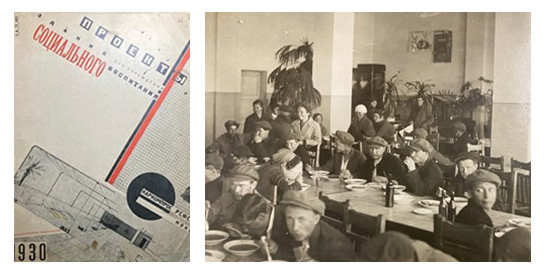
Proekty zdanii dlia uchrezhdenii sotsialnogo vospitaniia (Designs of Buildings for Social Education). Moskva (Moscow): Gosizdat, 1930.
Constructivist design by P. V. Pomazanov; formerly owned by architect Leonid Grinshpun (1906-1981). An exceedingly scarce publication, it was dedicated to futuristic designs for various educational institutions, including orphanages, schools, after-school care centers, etc. None of them would ever be built and all would remain only as architectural plans and drawings. The work focused on the problems of school buildings at the time, pedagogical requirements, construction work, and perspectives. It featured drawings and designs of city school buildings, schools in rural villages (wood, stone, etc.), dormitories, teachers’ accommodations, workshops, athletic fields, and so on.
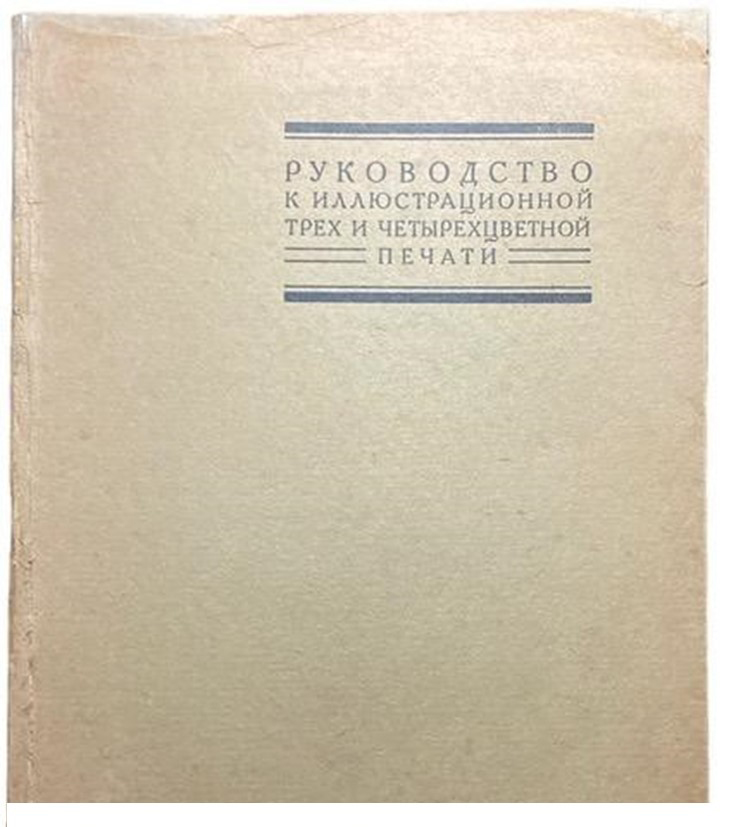
Anisimov, V. I. Rukovodstvo k illiustratsionnoi trekh i chetyrekhtsvetnoi pechati. S dvumia krasochnymi prilozheniiami i skaloiu krasok (A Guide to Illustrative Three- and Four- Color Printing, With Two Colorful Examples and Samples of Colors). Moskva (Moscow): TSK SRPP SSSR (Central Committee of the Union of Printed Industry Workers), 1925.
Vladimir Ilich Anisimov (1870 - 1932) was a book historian, printer, and typesetter, who would win a gold medal at the first-ever All-Russian Exhibition of Printing in 1895 - for his execution of cover composition using typographic elements. He would go on to write numerous works on book history and design and would serve as director to several printing houses.
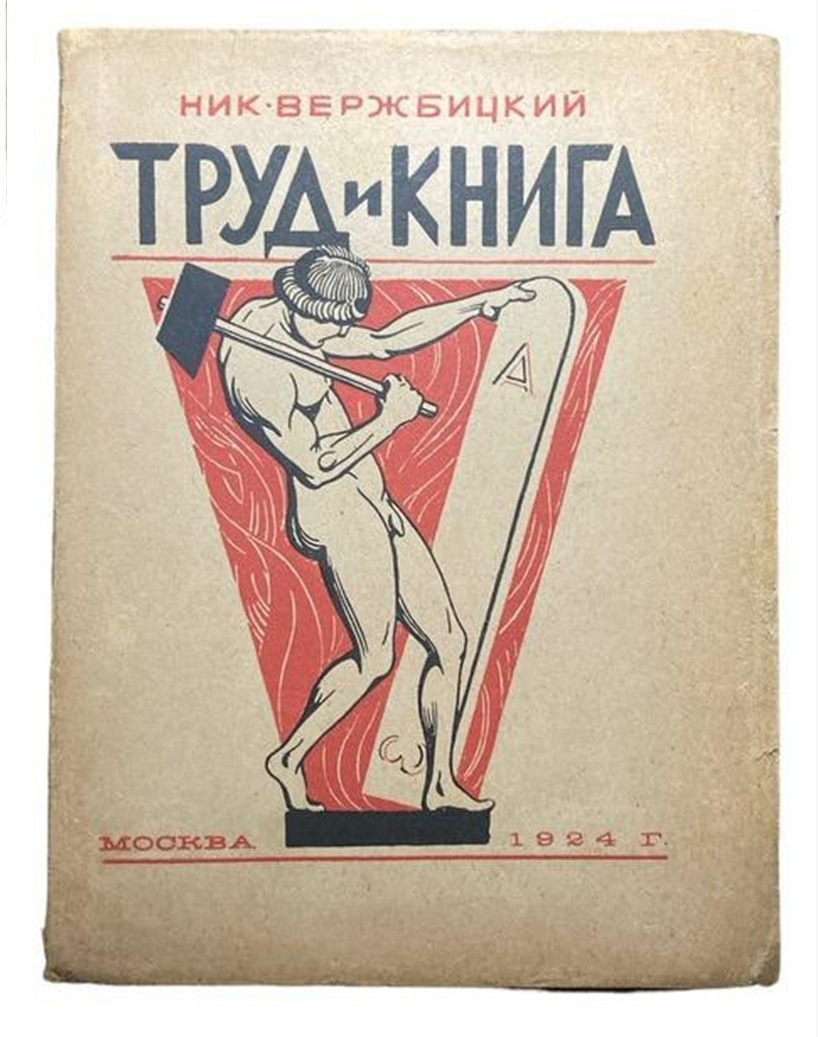
Verzhbitskii, Nik. Trud i kniga (Labor and the Book).
Nikolai Verzhbitskii (1889-1973) was an author and journalist, best known for his memoirs of Yesenin and Kuprin. His concise study of the history of the book traces the development of alphabets, the first printed books (especially the first Russian books), illustrations and libraries. A wonderful addition to our book and printing history collection!
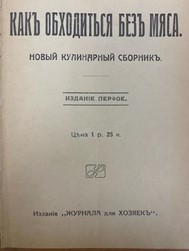
Kak obkhoditsia bez miasa. Novyi kulinarnyi sbornik (How to Get By Without Meat. A New Cookbook). S. l. (Moscow): Izdanie "Zhurnala dlia Khoziaek", n. d. (1917).
Arguably, the second vegetarian- and the first pescatarian cookbook to be published in Russia, it featured an exhaustive array of recipes, including soups, desserts, sauces, baked goods, main dishes, etc. The first-ever, fully-vegetarian cookbook had been published in 1913 by Olga Zelenkova - author and wife of surgeon and chairman of the first vegetarian society in Russia Aleksandr Zelenkov. In contrast, the goal of the authors of the current book had been to introduce recipes "without meat," because of its scarcity and high prices at the time. Thus, they had also chosen to include various fish dishes, as well.

